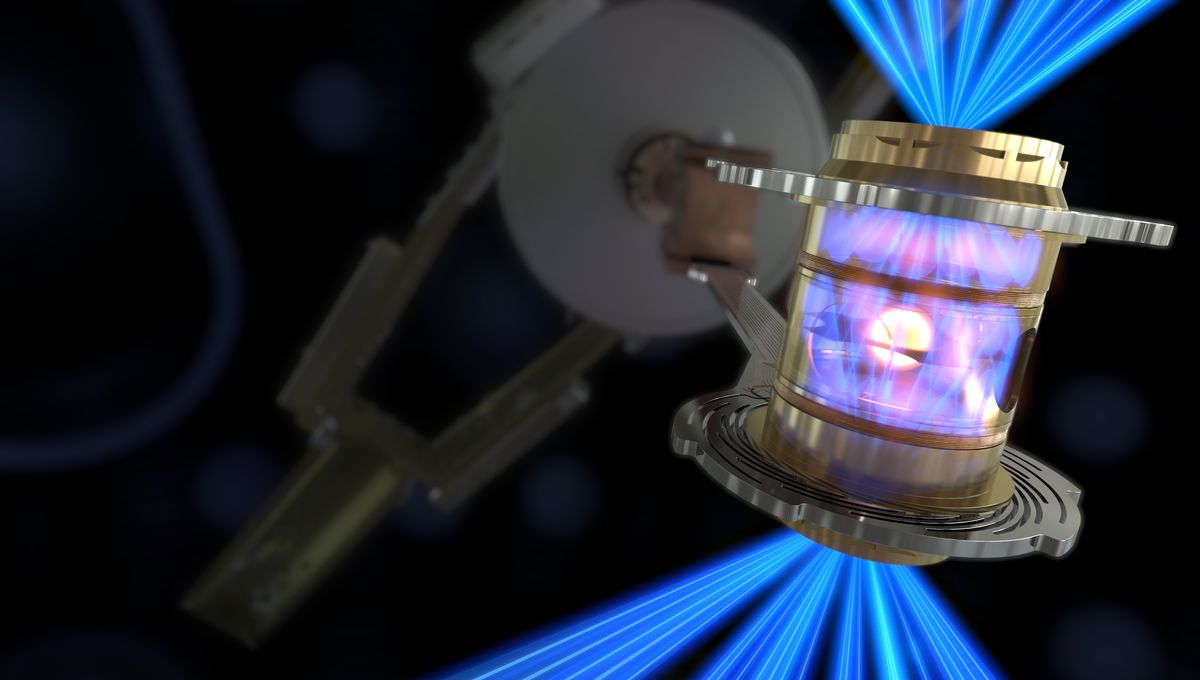
For the first time, a controlled fusion experiment has produced more energy than was put in. This is known as ignition, and it was achieved at the Lawrence Livermore National Laboratory’s National Ignition Facility (NIF) in California. An experiment conducted on December 5 has reached that incredible threshold and milestone achievement in the quest to control the physics that powers the Sun and all the stars.
The NIF approach to fusion requires lasers and a type of hydrogen that has neutrons in its nucleus. This heavy hydrogen is kept in a tiny cylinder, and this container is shot with the largest laser in the world. The power it delivers is enormous; the cylinder is vaporized in an instant, turned into plasma, and shot inwards, where it encounters the hydrogen with such force that the fuel is compressed and fuses. This process releases energy.
The energy delivered by the laser alone on December 5 was 2.05 megajoules, and it produced 3.15 megajoules of fusion energy output. This energy output is modest in the grand scheme of things (less than a kilowatt hour), but they got 53 percent more energy out than they put in.
“The pursuit of fusion ignition in the laboratory is one of the most significant scientific challenges ever tackled by humanity, and achieving it is a triumph of science, engineering, and most of all, people,” Lawrence Livermore National Laboratory Director Dr Kim Budil said in a statement. “Crossing this threshold is the vision that has driven 60 years of dedicated pursuit — a continual process of learning, building, expanding knowledge and capability, and then finding ways to overcome the new challenges that emerged. These are the problems that the U.S. national laboratories were created to solve.”
The NIF approaches nuclear fusion in a different way from the reactors being built in Europe and Asia, which are either tokamaks or stellarators. But no matter what design they follow, nuclear fusion plants are unlike traditional nuclear power plants, which work by nuclear fission. Fusion doesn’t produce heaps of nuclear waste to be buried and can’t experience a nuclear meltdown. Also, unlike fossil fuel plants, fusion doesn’t depend on the burning of fuels and so it doesn’t release greenhouse gases.
“The experiment demonstrates unambiguously that the physics of Laser Fusion works. In order to transform NIF’s result into power production a lot of work remains, but this is a key step along the path. Next steps include the demonstration of even higher fusion energy-gain and the further development of more efficient methods to drive the implosion,” Dr Robbie Scott, of the Science and Technology Facilities Council’s Central Laser Facility Plasma Physics Group, said in a statement.
Dr Scott was responsible for the discovery that non-spherical implosions are less efficient. This led to the development of better diagnostic tools that made sure the implosions are as spherical as possible.
The road to a commercial power plant remains long. A future of unlimited carbon-free energy is clearly possible, but to get there, investment in renewables today and continued support of fusion research are key.
Source Link: We Have Ignition: US Experiment Becomes First To Achieve Controlled Fusion